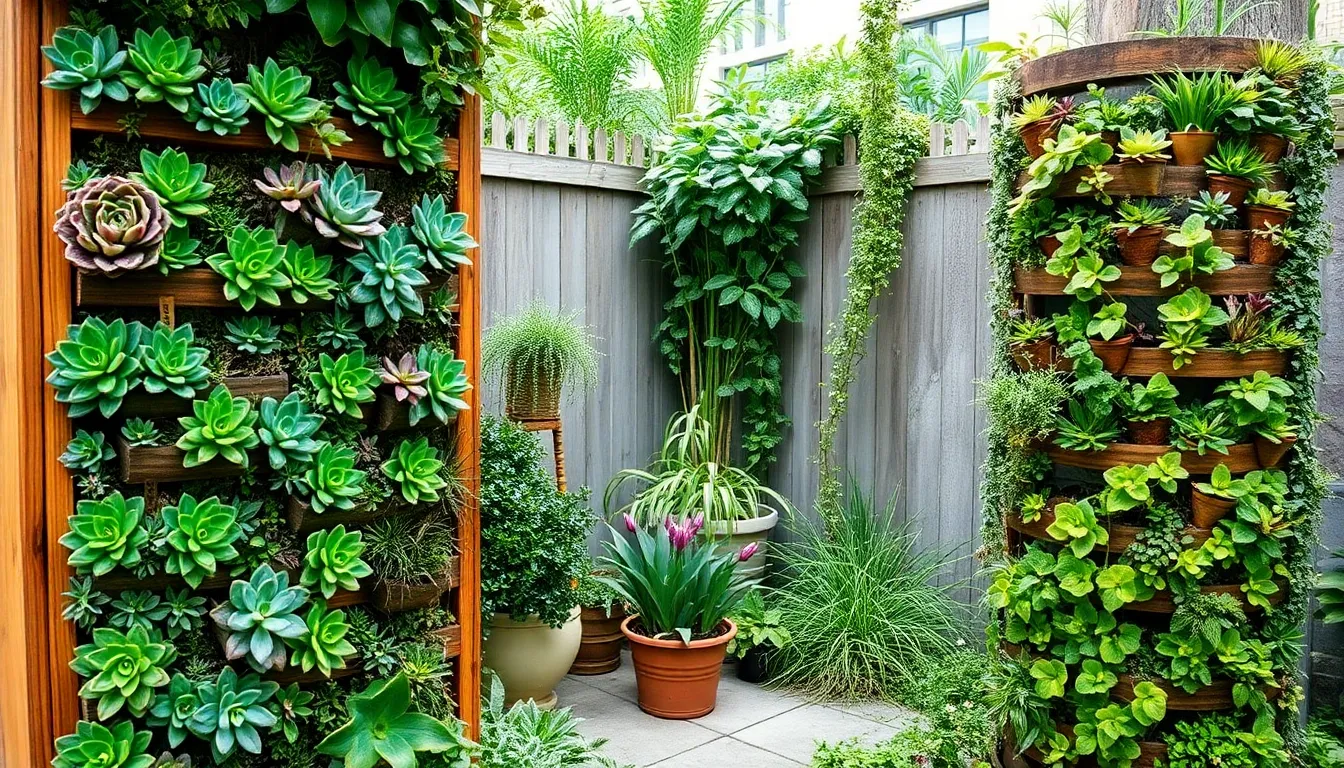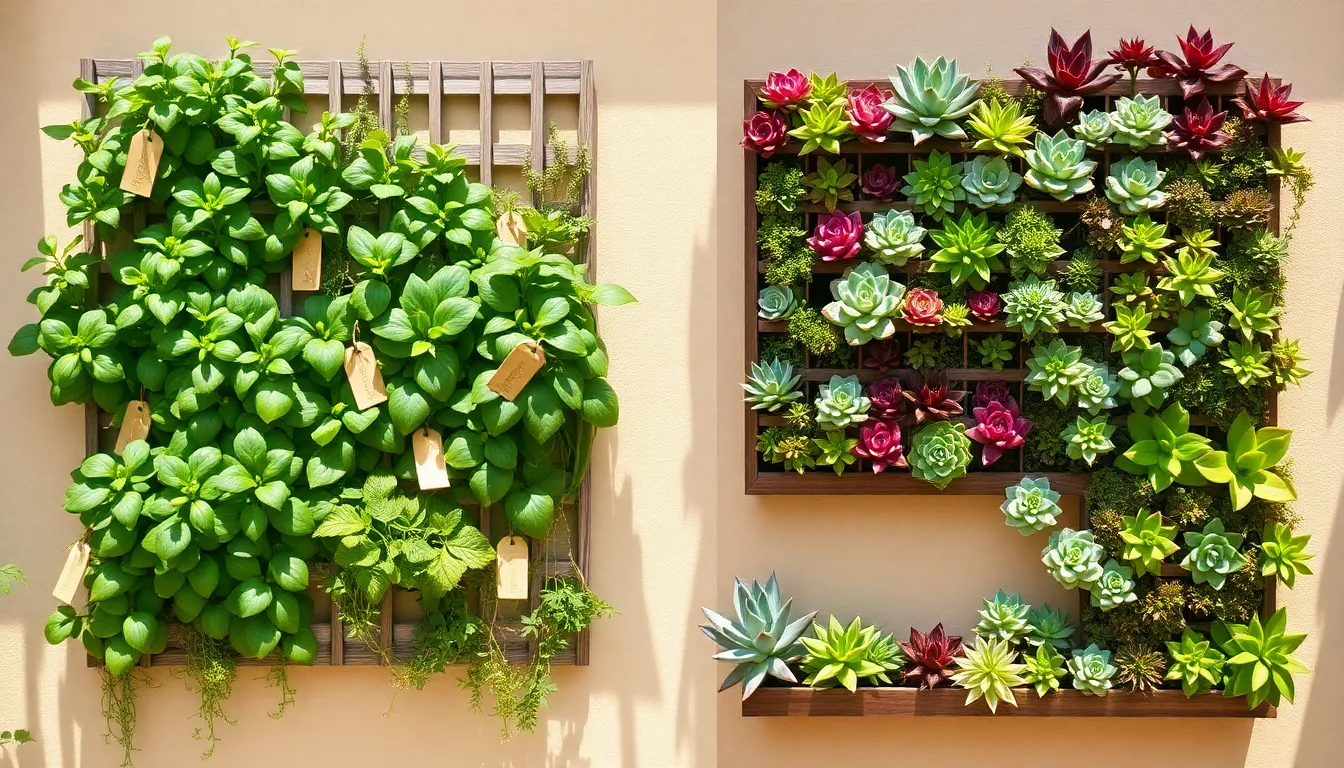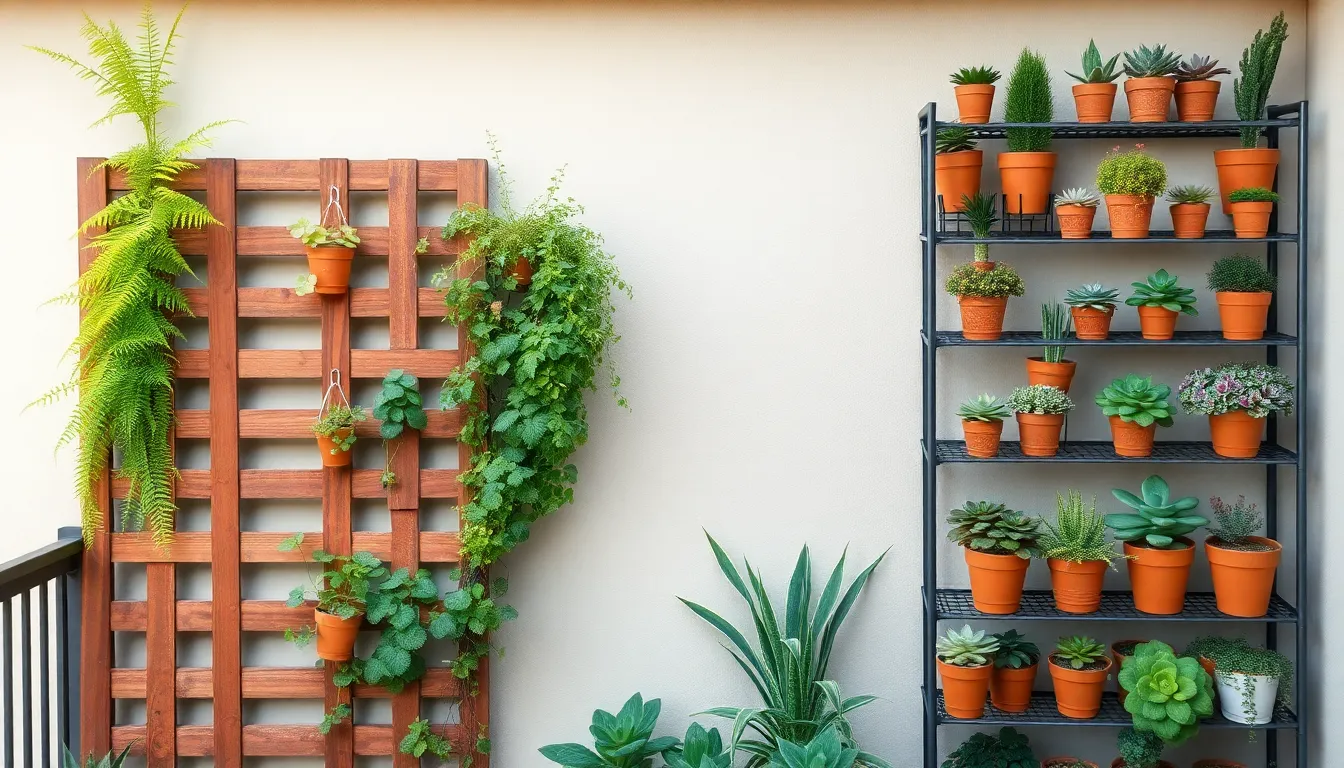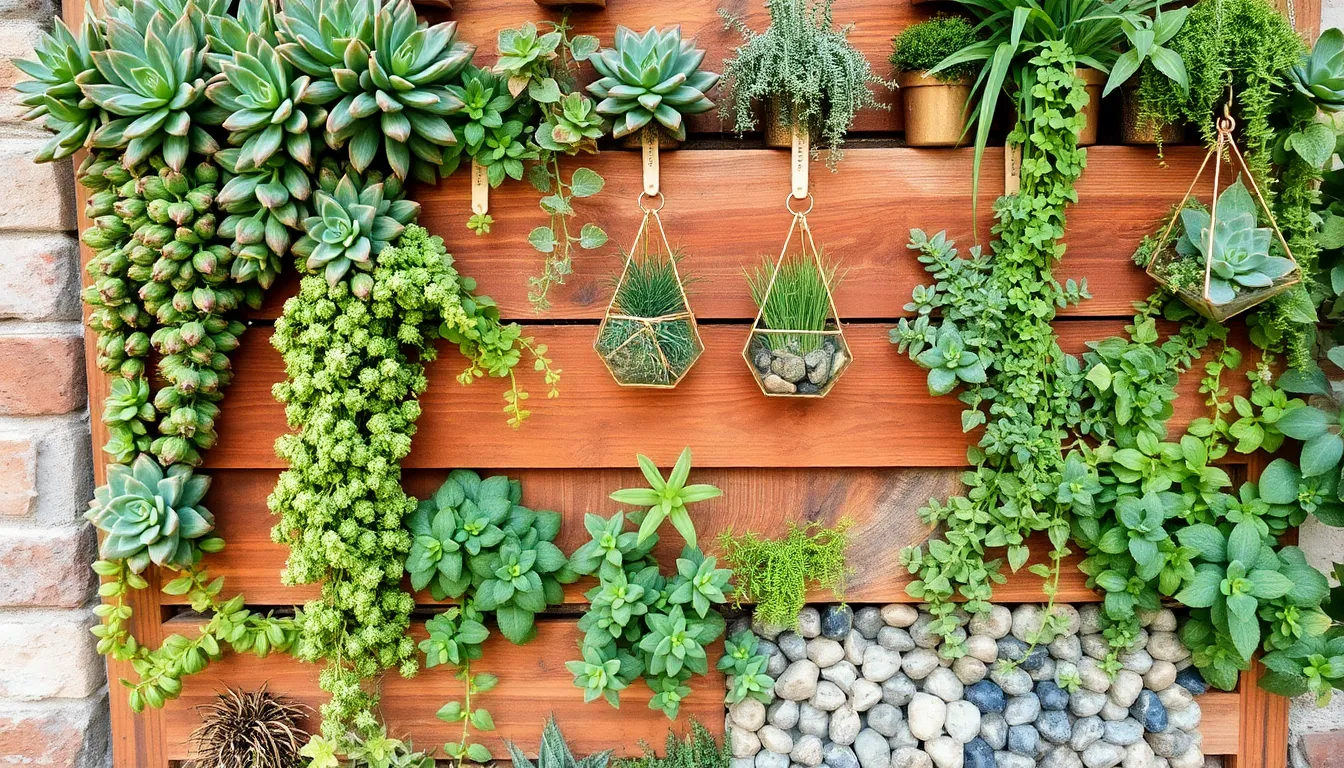Imagine transforming even the smallest spaces into lush, green sanctuaries that captivate the eyes and soothe the soul. Vertical gardening is a remarkable approach that allows both novice and seasoned gardeners to cultivate vibrant plant life without sprawling plots of land. As urban living spaces shrink and our desire for nature grows, vertical gardens offer an ingenious solution that brings beauty and biodiversity into our homes and communities.
Whether you’re a beginner eager to dip your toes into the world of gardening or a seasoned green thumb looking for fresh ideas, vertical gardens offer a canvas for creativity and innovation. In this article, you’ll discover eight stunning vertical garden inspirations that will inspire you to reimagine your walls, fences, and even small patios as thriving ecosystems. From simple DIY projects to elaborate structures, we’ll guide you through designs that are not only visually striking but also practical and sustainable.
You’ll learn how to select the right plants for your vertical space, understand the basics of vertical garden construction, and explore maintenance tips to ensure your garden flourishes over time. With each inspiration, you’ll gain insights into maximizing space, enhancing your environment, and making a positive impact on your well-being. So, let your imagination climb as we delve into the world of vertical gardens, where every inch is an opportunity to grow something beautiful.
Choosing Vertical Garden Structures
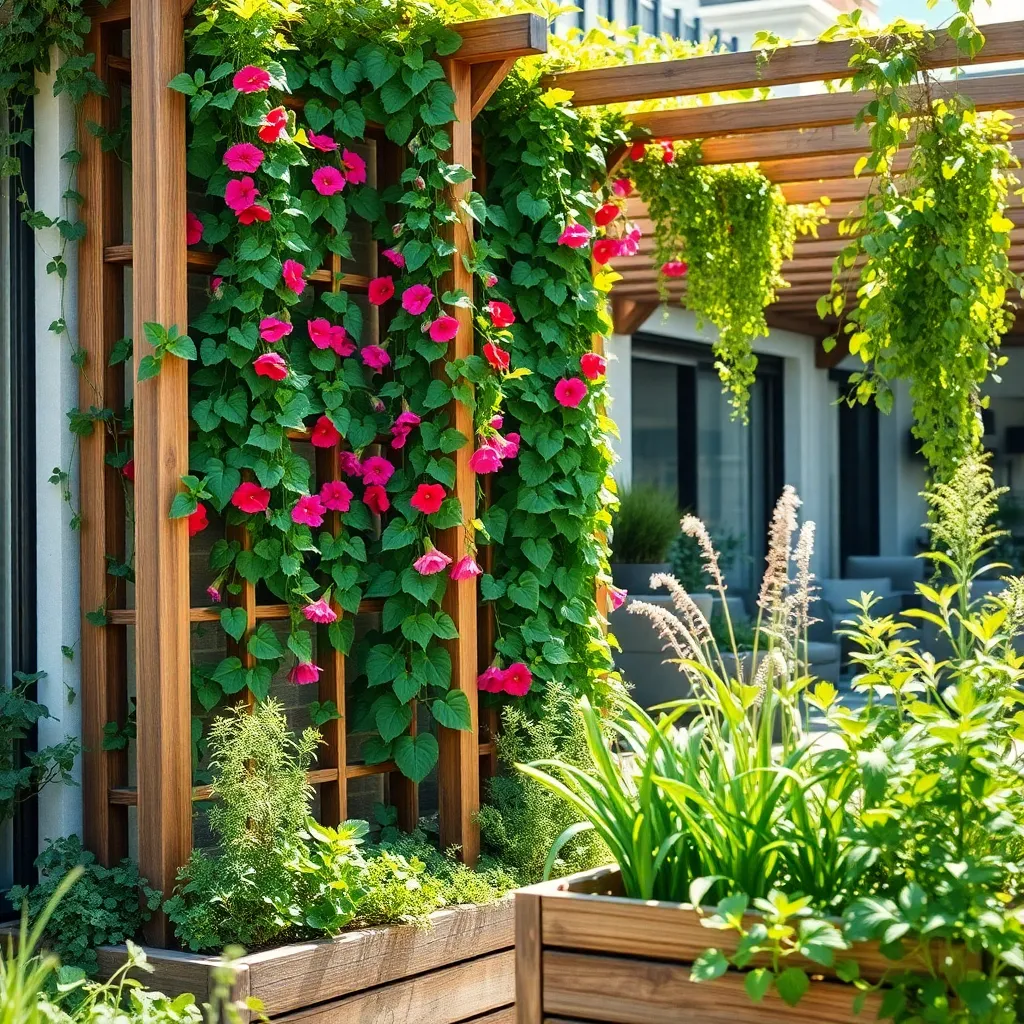
When choosing vertical garden structures, consider the space and light conditions of your area. Opt for materials like metal or treated wood that withstand weather changes, ensuring durability and stability for your plants.
Begin with simple structures like trellises or wall planters that are easy to install and maintain. These can support a variety of plants, from flowering vines to herbs, making them versatile for different gardening needs.
For more advanced gardeners, living walls or hydroponic systems offer a sophisticated option. These systems require careful attention to water management and nutrient delivery, but they create stunning visual displays.
Consider the weight of the plants and soil when selecting a vertical structure, as some might need extra support. Use lightweight potting mixes and choose plants with similar water and light needs to ensure harmonious growth.
Maximizing Small Space Potential
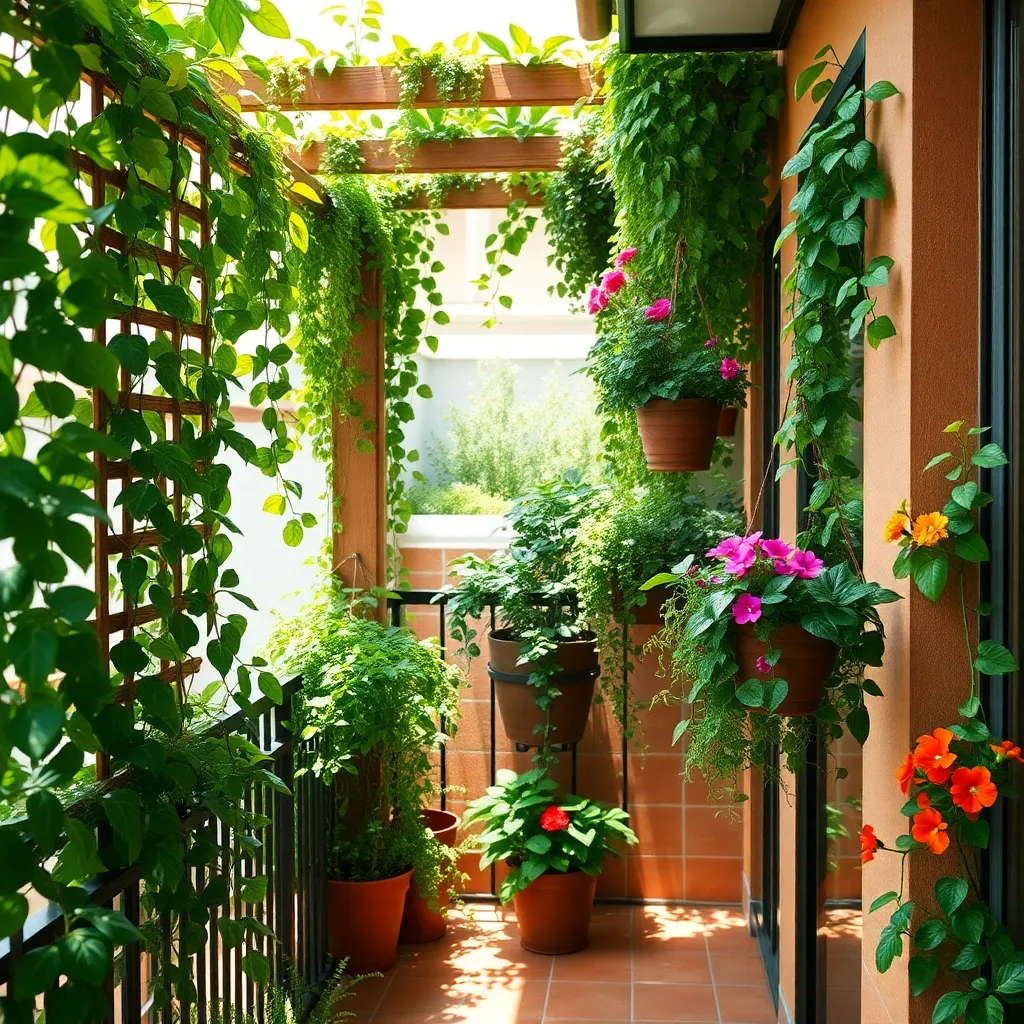
When space is limited, vertical gardens offer a fantastic way to grow a variety of plants without sacrificing square footage. By utilizing wall-mounted planters or hanging baskets, you can transform any small area into a lush, green oasis.
Consider using lightweight, breathable materials like fabric or mesh for your vertical planters, which allow for better air circulation and drainage. Ensure your chosen containers have adequate drainage holes to prevent root rot and other moisture-related issues.
For beginners, starting with hardy plants such as ferns and succulents can be a great way to manage care requirements. These plants generally require less frequent watering—typically once every week or two—and can thrive in a range of lighting conditions.
Experienced gardeners might explore growing herbs or even small vegetables like cherry tomatoes in their vertical gardens. These plants will need nutrient-rich soil, such as a mix of potting soil and compost, and regular feeding every few weeks with a balanced fertilizer.
Maximizing space also involves strategic placement to ensure plants receive adequate sunlight, ideally around 6-8 hours a day for most vegetable and herb options. If natural light is a limitation, consider installing grow lights to supplement your plants’ needs.
Creative Plant Selection Ideas
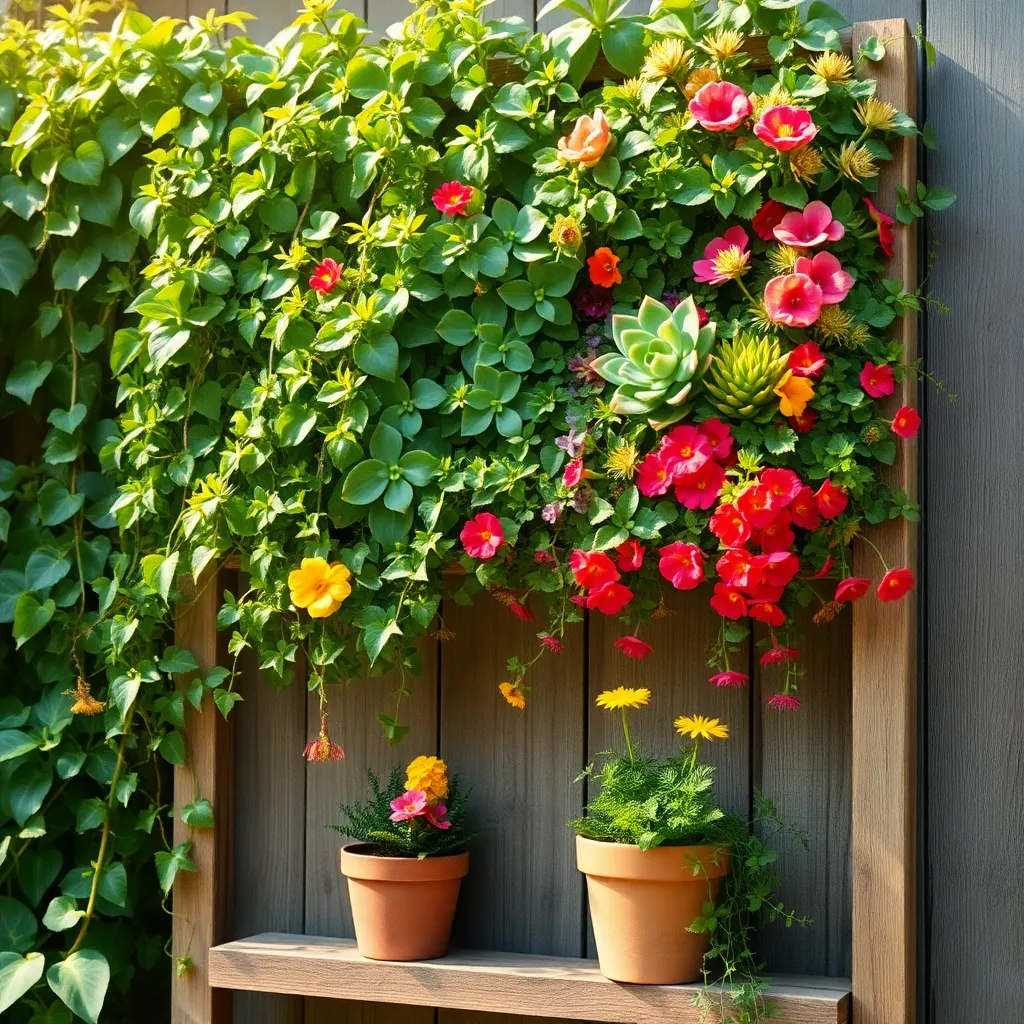
Choosing the right plants is crucial in creating a stunning vertical garden. Opt for species that naturally climb or cascade, such as ivy or pothos, to maximize visual impact.
Consider the light conditions of your space before selecting plants. For shaded areas, ferns and hostas thrive beautifully, while sun-drenched walls support vibrant flowering vines like bougainvillea.
To add texture and depth, mix plant types within your vertical garden. Combine different leaf shapes and colors—such as succulents paired with leafy greens—for a visually dynamic display.
Advanced gardeners might experiment with epiphytes like orchids or air plants, which require minimal soil and thrive in vertical arrangements. These plants can create a striking, exotic look, especially when arranged creatively.
Ensure you choose plants with similar water and nutrient needs to simplify maintenance. Use a drip irrigation system or self-watering planters to keep your garden hydrated without overwatering.
DIY Vertical Garden Projects
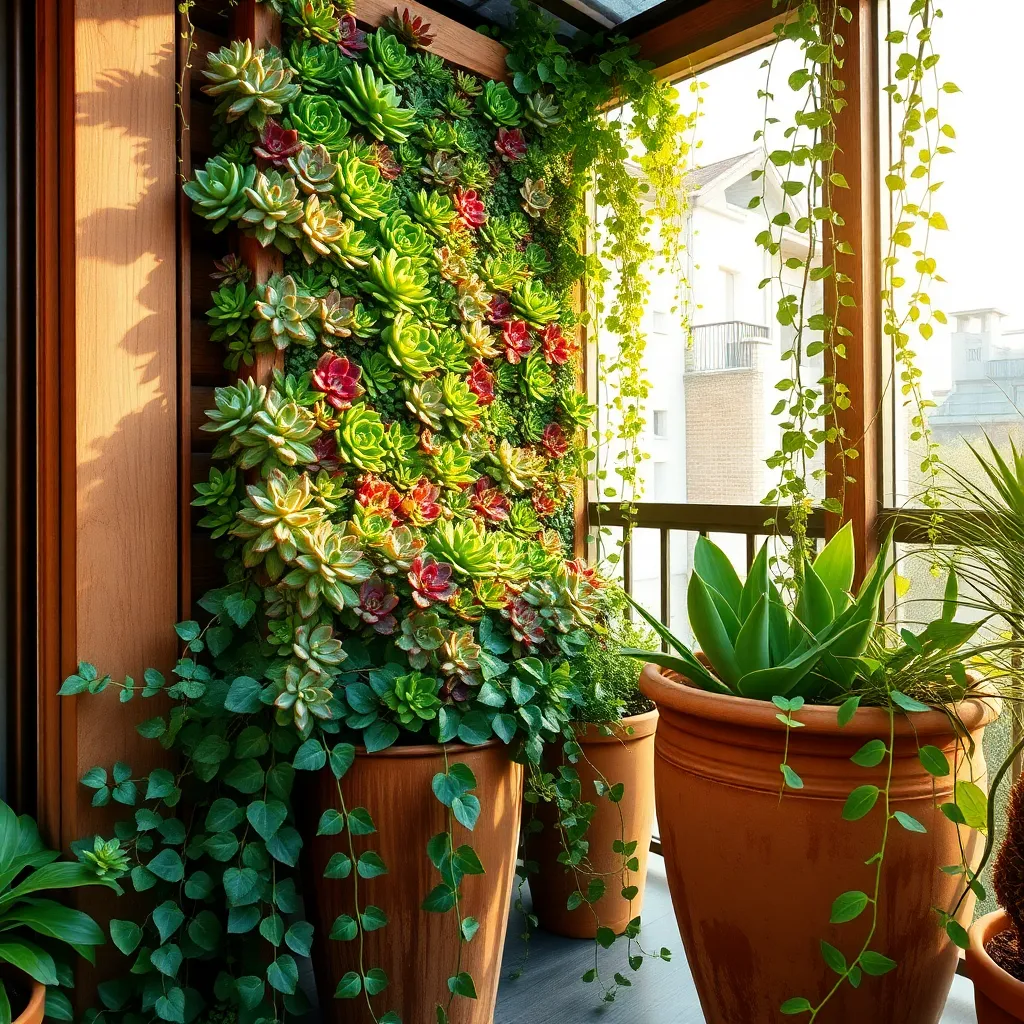
A DIY vertical garden is an excellent way to maximize your space while creating a stunning visual display. Start by choosing a sturdy structure like a wooden pallet or a metal grid that can support the weight of your plants and soil.
Consider using lightweight potting mix for your vertical garden to aid drainage and reduce weight. Ensure good drainage by lining your structure with landscape fabric before adding soil, preventing water from pooling around your plants’ roots.
Plant selection is crucial in a vertical garden, as some species thrive better than others in these conditions. Opt for plants like succulents, ferns, or small herbs that naturally grow in compact spaces and have modest water requirements.
For beginners, start with easy-care plants like pothos or spider plants, which are both forgiving of a range of light conditions. Regularly check soil moisture and water when the top inch feels dry, ensuring consistent care.
Experienced gardeners might explore the challenge of growing small vegetables or strawberries vertically. Use a controlled-release fertilizer to provide nutrients that are often flushed out in vertical setups, maintaining your plants’ health and productivity.
Finally, pay attention to the light needs of the plants you choose, arranging them according to their sun exposure preferences. Rotate your structure occasionally if possible, to ensure even growth and maximize the light exposure for all plants.
Innovative Wall Garden Designs
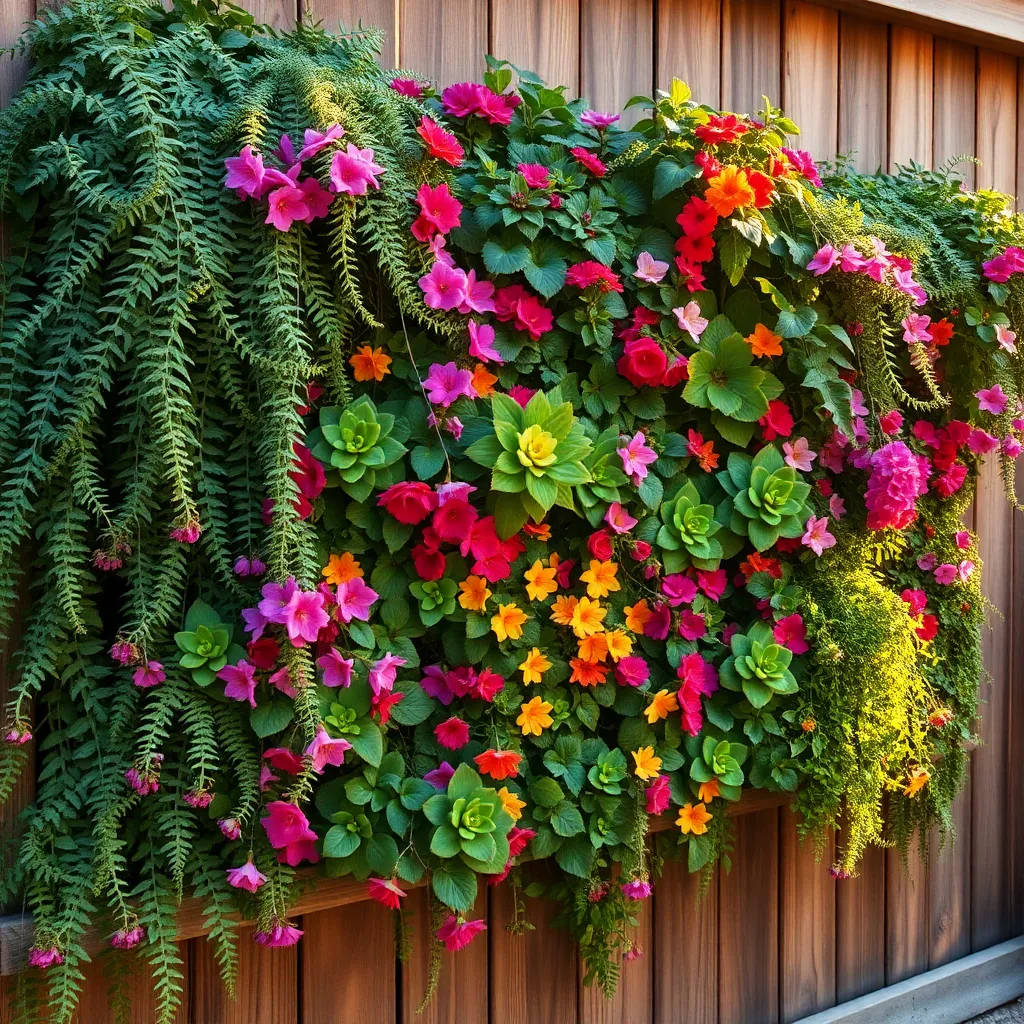
Incorporating innovative wall garden designs can transform any vertical space into a lush, living masterpiece. Consider using modular panels, which allow for easy customization and can be adjusted to fit any wall size, making them ideal for both small balconies and expansive patios.
For those new to vertical gardening, start with hardy plants like succulents or ferns, which are both forgiving and visually striking. Ensure these plants are placed in well-draining soil, such as a mix of one part perlite to two parts potting mix, to prevent root rot.
Advanced gardeners might experiment with automated irrigation systems that ensure consistent watering without daily manual effort. These systems can be programmed to deliver water at optimal times, reducing water waste and enhancing plant growth.
Lighting is crucial for wall gardens, especially if they are indoors or in shaded areas. Utilize grow lights to simulate sunlight, placing them about 12 inches above the plants to mimic natural conditions while maintaining energy efficiency.
The structural support of your wall garden is critical; choose materials like stainless steel or treated wood that resist weathering. This ensures the longevity of your garden and provides a sturdy base for your plants to thrive.
Finally, regularly check for pests and diseases, particularly in dense plantings where air circulation might be limited. Implementing natural pest control methods, such as introducing beneficial insects, can help maintain a healthy ecosystem within your vertical garden.
Sustainable Vertical Gardening Tips
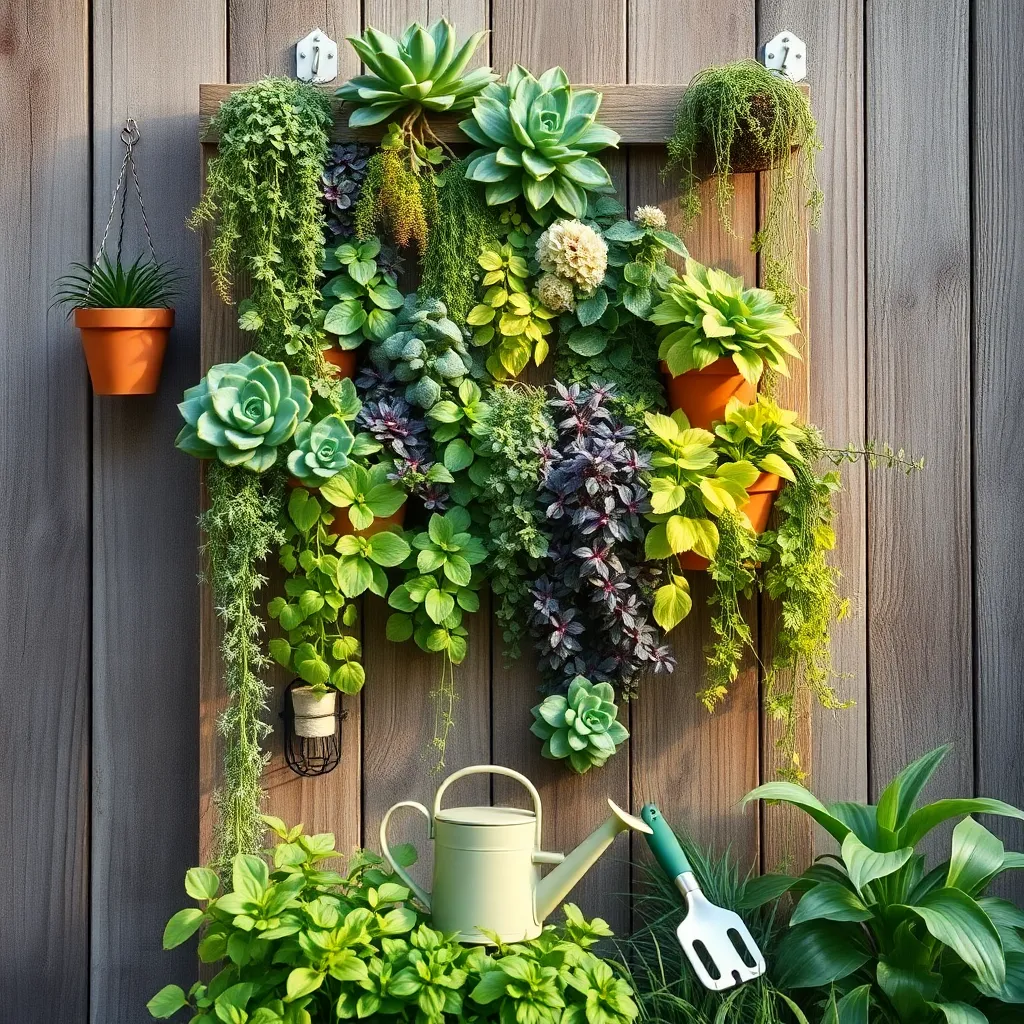
Utilizing vertical space efficiently can transform any garden into a lush paradise, even in the smallest of areas. Start by selecting a sturdy structure like a trellis, pallet, or wall planter to support your plants and ensure they thrive.
Consider the light requirements of your plants before positioning your vertical garden. South-facing walls are ideal for sun-loving species, while shaded areas can host ferns and other low-light plants.
For a sustainable approach, choose native plants that are naturally adapted to your climate. This reduces the need for excessive watering and maintenance, making your vertical garden more eco-friendly.
Soil is the foundation of any successful garden, and vertical gardens are no exception. Use a lightweight, well-draining potting mix to prevent root rot and ensure your plants receive adequate nutrients.
Watering can be a challenge in vertical gardens, so consider installing a drip irrigation system. This not only conserves water but also ensures that each plant receives the moisture it needs without oversaturating the soil.
Finally, think about incorporating a mix of annuals and perennials to keep your vertical garden vibrant year-round. This combination allows for continuous blooms and foliage, offering a dynamic display that changes with the seasons.
Vertical Herb Garden Techniques
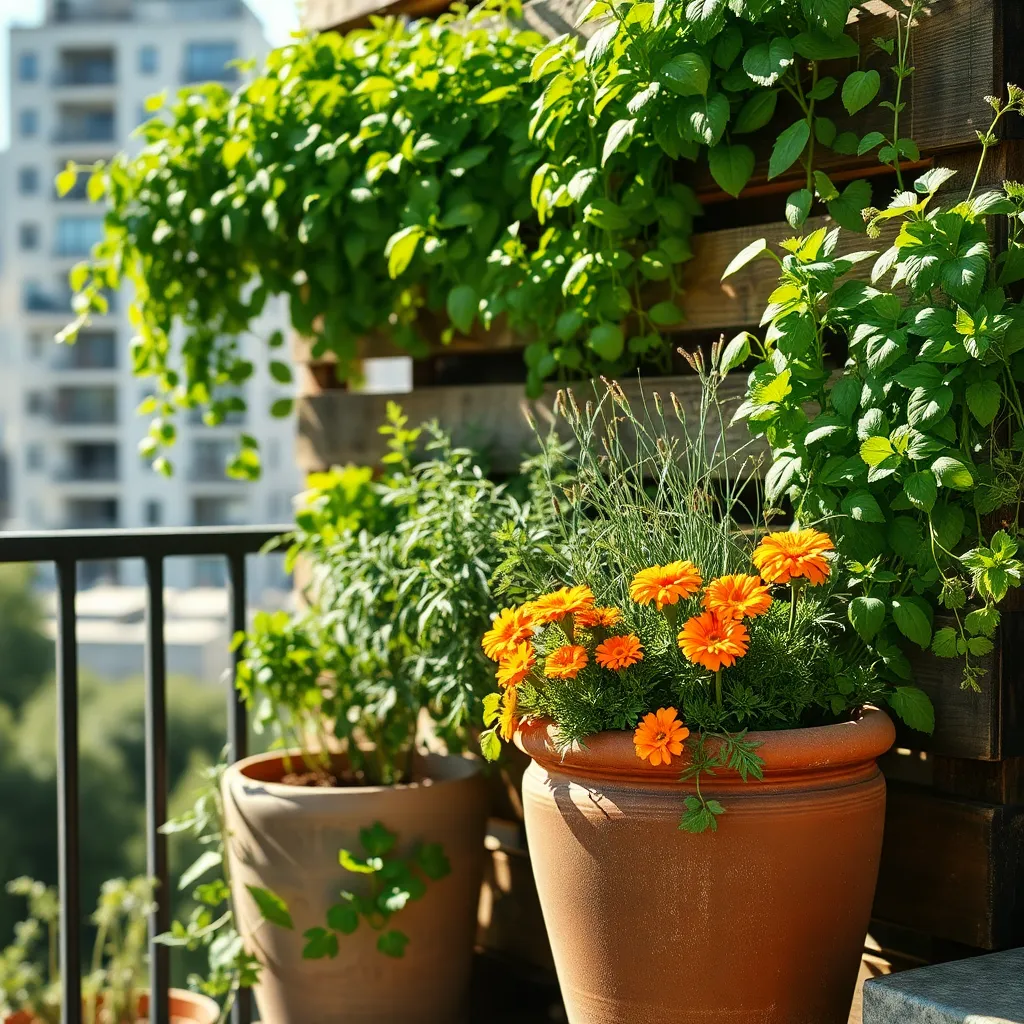
Creating a vertical herb garden is a delightful way to maximize your gardening space while keeping fresh herbs within arm’s reach. Consider using a wooden pallet or a wall-mounted planter to save space and add aesthetic appeal to your garden.
Choose herbs that thrive in similar conditions, such as basil, thyme, and oregano, to ensure consistent care requirements. These herbs prefer well-draining soil, so use a mix that includes sand or perlite to prevent waterlogging.
Watering is crucial for a successful vertical herb garden, especially because vertical arrangements can dry out faster. Aim to water your herbs twice a week, adjusting frequency based on weather conditions and the specific needs of your plants.
For more experienced gardeners, integrating an automatic drip irrigation system can ensure your herbs receive consistent moisture without overwatering. This is particularly useful if you’re growing herbs like mint that can become invasive and require regular maintenance.
Maintaining Your Vertical Oasis
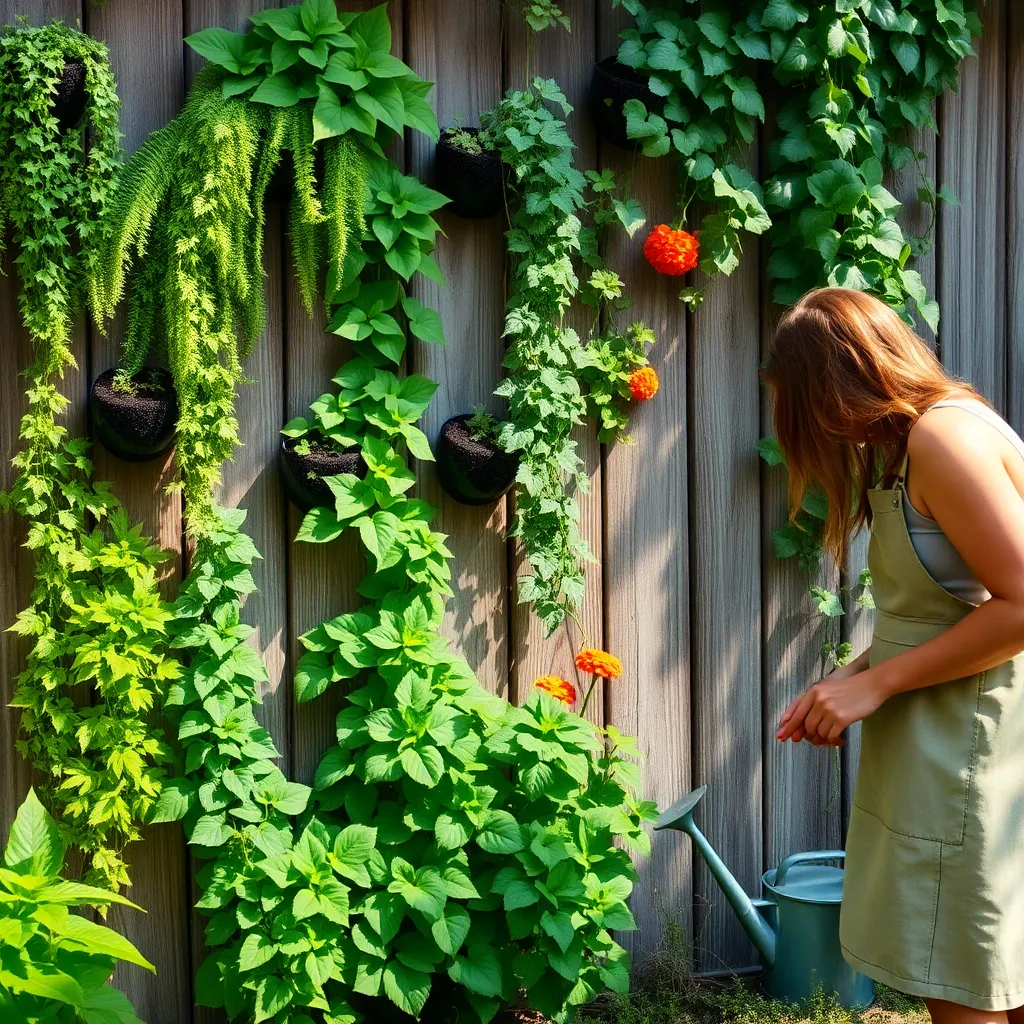
Maintaining a vertical garden requires regular attention to ensure healthy plant growth. Begin by assessing the specific needs of your plants, as different species require varying levels of sunlight and moisture.
Watering is crucial, especially since vertical gardens can dry out faster than traditional gardens. Use a drip irrigation system or self-watering planters to maintain consistent moisture levels and prevent over-watering.
Fertilizing is another key aspect of vertical garden maintenance. Opt for a slow-release fertilizer to provide your plants with a steady supply of nutrients, and consider adding a liquid fertilizer to your watering routine every few weeks during the growing season.
Pruning helps keep your vertical garden lush and vibrant. Regularly trim dead or overgrown foliage to promote air circulation and encourage new growth, which can prevent diseases and pests from taking hold.
Conclusion: Growing Success with These Plants
As you explore the world of stunning vertical garden inspirations, it’s evident that nurturing your relationship can be just as rewarding as cultivating a lush garden. The eight key concepts we’ve explored—communication, trust, quality time, empathy, shared goals, adaptability, appreciation, and personal growth—are the foundational pillars that help relationships flourish. Each concept mirrors the care and attention required to maintain a vibrant vertical garden, reminding us that relationships thrive when nurtured with intention.
Now, take a moment to reflect on which of these concepts resonates most with your current relationship dynamics. Choose one actionable step to integrate into your daily routine, whether it’s expressing appreciation more frequently or setting aside uninterrupted time to connect. This small yet significant change can act as the first seed of transformation in your relationship.
Remember, growth in any relationship is a continuous journey. To support you on this path, save or bookmark this article as a handy reference. Revisit it whenever you need a gentle reminder of the core principles that sustain thriving relationships. Embrace these ideas with optimism, and you’ll find that your relationship can bloom into a source of lasting joy and fulfillment.

